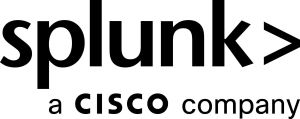Using the Content Pack for ITSI Monitoring and Alerting for policy management
Writing correlation searches and creating notable event aggregation policies (NEAPs) from scratch is time-consuming and error prone. You need a better way to get started with these Splunk ITSI features.
This article is part of the Definitive Guide to Best Practices for IT Service Intelligence. ITSI end users will benefit from adopting this practice as they work on Event Analytics and Service Insights.
Solution
The Content Pack for ITSI Monitoring and Alerting contains a variety of correlation searches and several notable event aggregation policies for different use cases.
Correlation searches
Correlation searches are recurring saved searches. If results are found for these searches, notable events are created and placed in the itsi_tracked_alerts index.
Creating correlation searches is a very time-consuming process. These must be configured in the ITSI Configuration searches interface rather than a .conf file, and there are a lot of fields to configure. In addition, you might accidentally configure them to behave in ways you do not intend.
Instead of taking administrative time to create these searches and then tune them whenever problems arise, it’s much easier to use the built-in searches from the Content Pack for ITSI Monitoring and Alerting. There are a number of out-of-the-box correlation searches in the content pack that can be enabled in ITSI.
Notable event aggregation policies
NEAPs are used to group notable events into episodes. NEAPs are also used to control what actions are taken when specified conditions are met.
Creating NEAPs isn’t as time-consuming as correlation searches but it is still administrative work to create and maintain these policies. The Content Pack for ITSI Monitoring and Alerting simplifies this work significantly.
If you are a Splunk Cloud Platform customer,there is a limit to both the number of correlation searches and of NEAPs you can have. See the platform service limits documentation for more information.
Next steps
You might also be interested in the following Splunk resources:
- Splunk Docs: Service insights manual
- Splunk Docs: Content Pack for ITSI Monitoring and Alerting
- Splunkbase: Splunk App for Content Packs
- Product Tip: Using the Monitoring and Alerting Content Pack
- Use Case: Configuring the ITSI Notable Event Aggregation Policy

